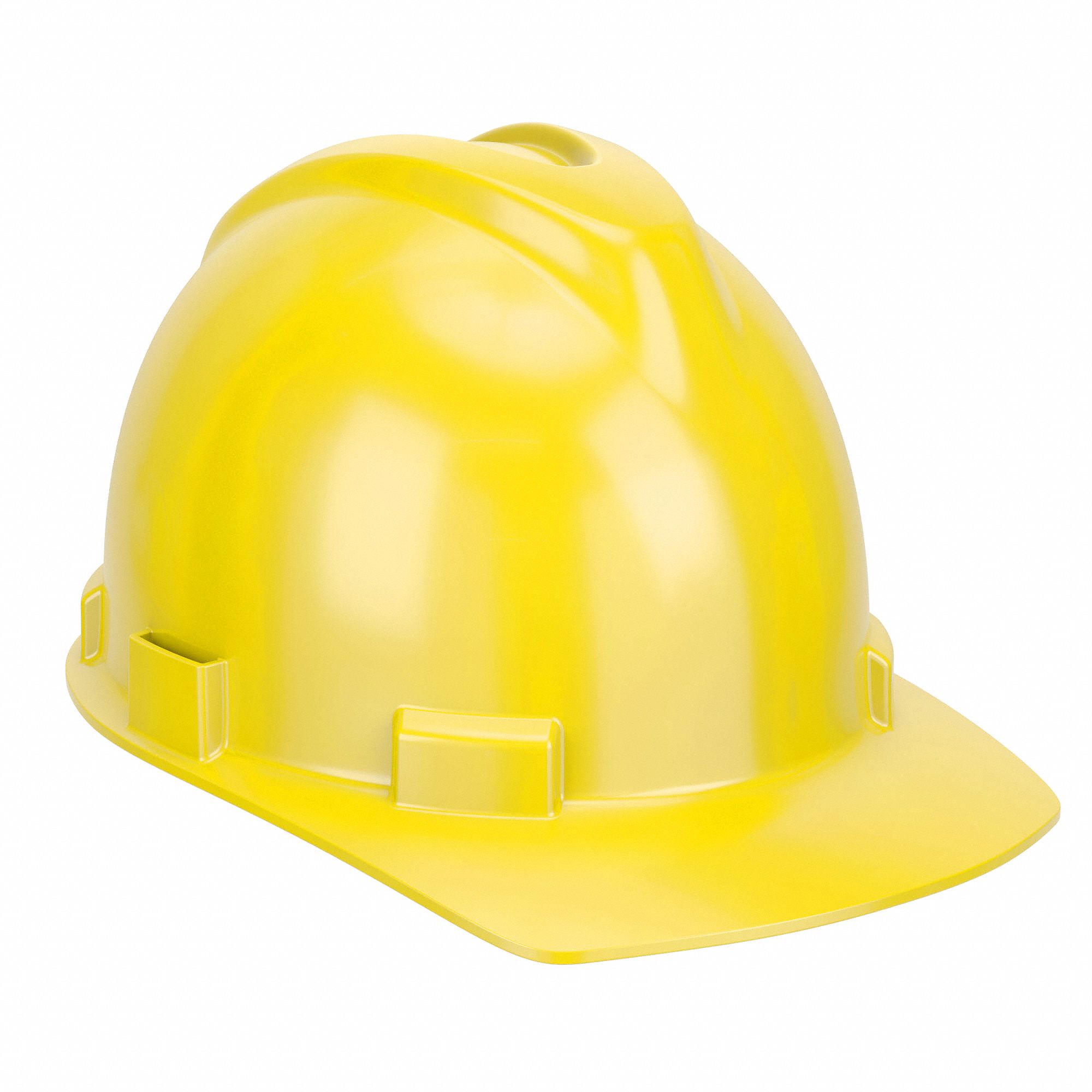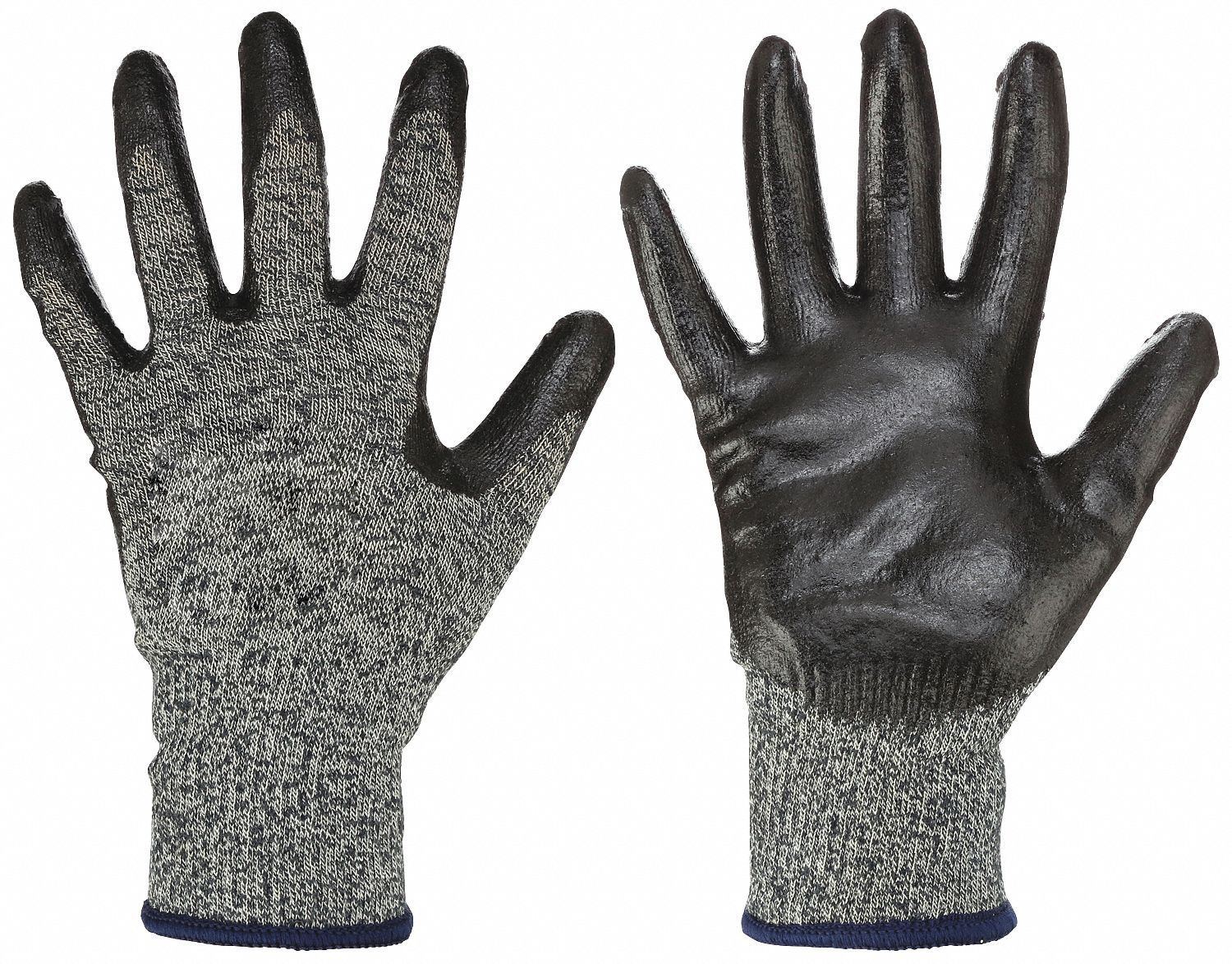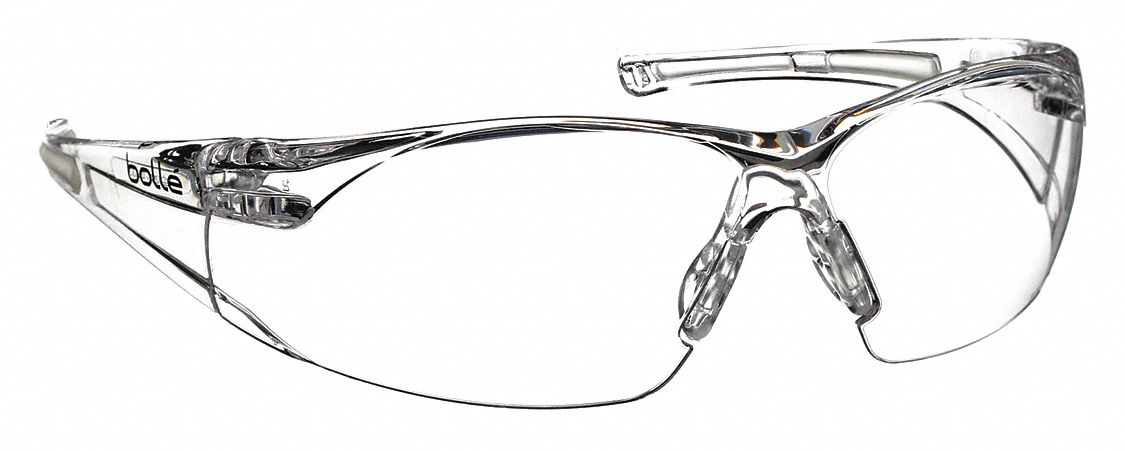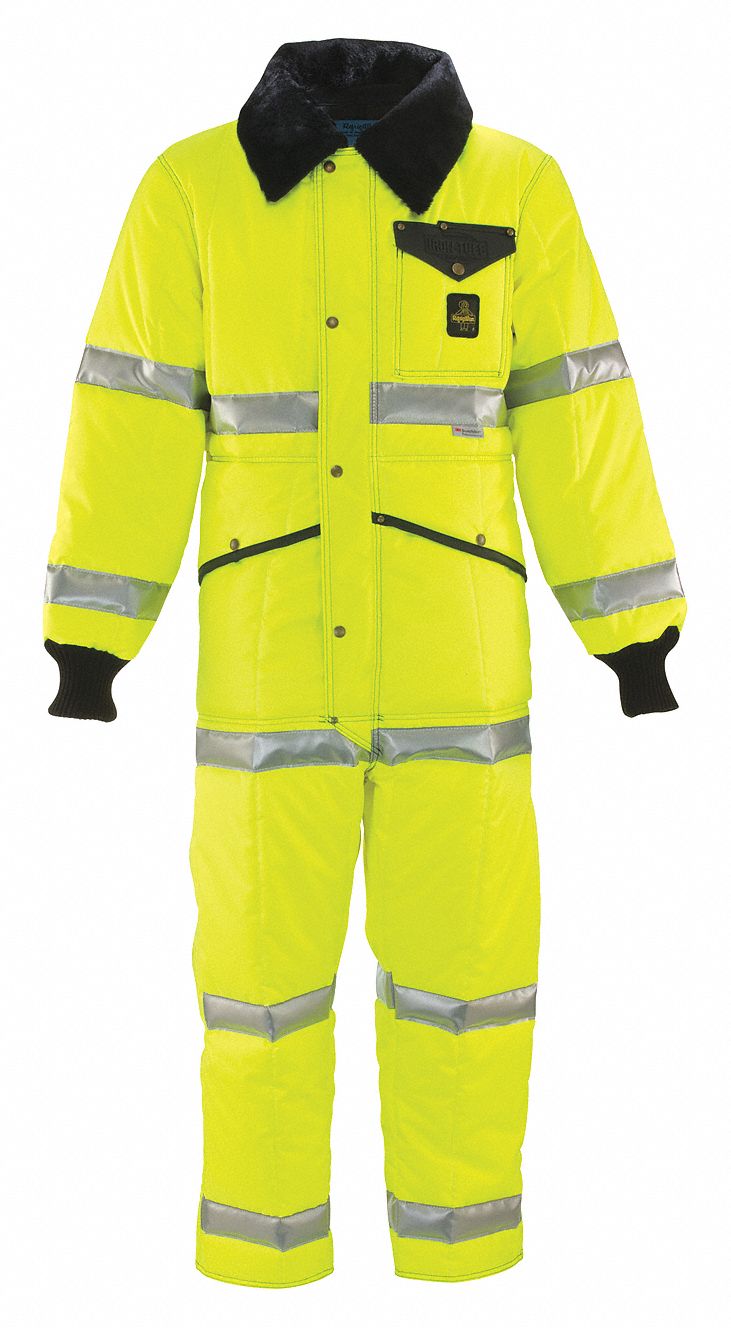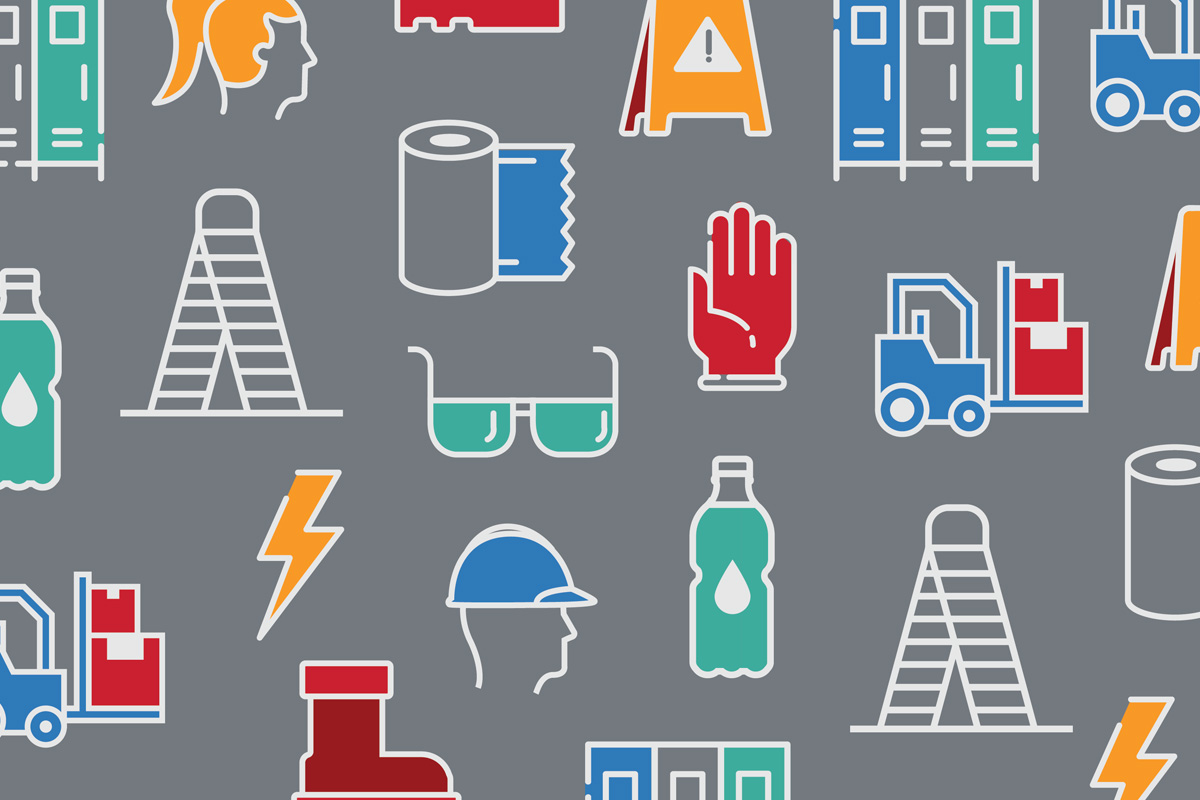

Are Good Safety Habits Established in Your Workplace?
By Grainger Editorial Staff 3/21/19


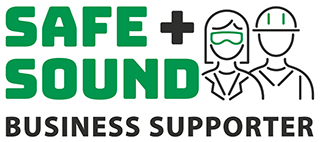
OSHA also invites organizations to share and celebrate their successes with Safe + Sound Week each August. Visit OSHA’s website for activity ideas and more.
Good safety habits are not a “some time” thing. They’re an all-the-time thing, and an important part of a strong safety culture. You can learn more about why safety habits are so important here. And while it’s easy enough to identify bad safety habits in the workplace, spotting the good habits can be harder.
That’s why we put together this list of signs that safety is a habit. We’ll start with some general indicators that apply across the board, before delving into industry-specific indicators for construction, manufacturing and more, in the safety habits charts below. After the lists, you'll find in-depth descriptions that explain the indicators and point to more resources.
General Signs of Good Safety Habits
- Everyone helps keep the work environment tidy and organized
- Everyone is comfortable reporting unsafe working conditions up the chain of command
- Everyone who should be wearing PPE is wearing it the right way—and it fits properly
- Everyone knows where safety equipment is located
- Everyone who handles heavy objects uses proper lifting and carrying techniques
- Everyone can see posters in the break room or on the job site demonstrating that their organization is committed to safety at the highest levels
- Everyone knows where to go and what to do in an emergency
- Everyone is aware of hazardous chemicals in work area and knows where to find additional information like Safety Data Sheets (SDSs) to prevent exposure
Signs of Good Safety Habits on the Construction Site
- Workers take pride in cleaning and maintaining tools and equipment
- Workers pause to drink water every 20 to 30 minutes to prevent dehydration
- Workers refuse to use fraying or improperly grounded extension cords
- Workers use available fall prevention and fall protection when working at heights
- Workers pay close attention to what’s behind and around them when operating moving equipment
Signs of Good Safety Habits in a Manufacturing Plant or Metalworking Shop
- Workers lock out machines when necessary
- Workers sweep up metal shavings and put them in containers that they empty frequently
- Workers avoid loose clothing, and they tie up their hair if it’s long
- Workers store solvents and other flammables in proper containers
- Workers inspect their forklifts before using them, and they use them with care
Signs of Good Safety Habits in a Healthcare Facility
- Workers wear protective equipment like gloves, masks and gowns when they may be exposed to blood or other sources of infection
- Workers wash or sanitize their hands frequently
- Workers have help when lifting or moving patients
General Safety Indicators
- Everyone helps keep the work environment tidy and organized
A messy workplace poses many safety hazards. On a construction site, for example, scattered debris and equipment creates a minefield of slip-and-trip hazards—and slips and trips are a leading cause of construction employee deaths, according to OSHA.
- Learn more about workplace housekeeping
- Get six tips to prevent slips, trips and falls
- Learn more about fall prevention
- Everyone is comfortable reporting unsafe working conditions up the chain of command
When safety has become a habit, good communication is a telltale sign. All employees should be confident pointing out potential safety concerns to their supervisors, without fearing blowback.
- Learn more about building a strong safety culture in our safety culture roundtable video and our safety story on improving safety culture
- Everyone who should be wearing PPE is wearing it the right way—and it fits properly
It goes without saying that workers should be wearing the right PPE, whether that’s high vis apparel, safety glasses, safety-toed footwear, hearing protection or hand protection. But take a closer look to see if safety has really become a habit.
Is the PPE being worn the right way? E.g., are respirators sealed tightly against the skin? Are hard hats facing forward (and if not, are they approved to be worn facing backward)?
And is the PPE in good condition? Weathered and scratched hard hats, faded high vis apparel, and worn-out boots are no longer providing optimal protection.
- Learn more about why workers might not be wearing their PPE
- Get technical tips on hardhats, respirators and more PPE
- Everyone knows where safety equipment is located
Safety equipment should always be clearly identified and accessible. But beyond that, it’s a sign of good safety habits when people actually know where the safety equipment, such as an emergency eyewash, is located.
Personal eyewash bottles and eyewash stations should be clearly marked with the expiration dates of their flushing fluids. And they need to be tested, too.
- Read about five safety eyewash station myths
- Everyone who handles heavy objects uses proper lifting and carrying techniques
Lifting and moving heavy loads is all in a day’s work. It’s also a frequent cause of injury—muscle strains and sprains. When safety is a habit, workers will limit these risks when they can. For example, heavy loads will be raised off the ground so workers don’t have to deadlift them, and workers will use equipment to help them lift and move things when possible.
- Learn more about ergonomics in the workplace
- Everyone can see posters in the break room or on the job site demonstrating that their organization is committed to safety at the highest levels
Don’t just walk by that poster on the break room wall—take a minute to read it. If the corporate mission statement talks about the importance of safety, that’s a sign that safety is valued from the C suite down. And if there’s a dedicated safety statement, all the better.
- Everyone knows where to go and what to do in an emergency
It’s not enough to have an emergency evacuation plan. Workers need to understand it and remember how to get out of the building—and what to do afterward. Paths to the exits should be clear, exit signs should be functioning and there should be a planned place to regroup in safety.
- Learn more about emergency exit sign requirements and photoluminescent exit signs
- Everyone is aware of hazardous chemicals in work area and knows where to find additional information like Safety Data Sheets (SDSs) to prevent exposure.
Many industrial workplaces have hazardous chemicals on site. It’s a sign of strong safety habits when people know where to find the Safety Data Sheets on these substances and understand how to use the SDSs to learn how to take appropriate precautions.
Construction Safety Indicators
- Workers take pride in cleaning and maintaining their tools and equipment
Tools with excessive wear or a buildup of dirt and grime can be hazardous. For example, power tools with frayed electrical cords can be electrical safety hazards, and ladders with worn or mud-caked rungs are a fall waiting to happen. When laborers take pride in cleaning their tools, and when their employers give them access to functional, well-maintained tools, that’s a good sign that safety has become a habit on the job site.
- Learn more about workplace housekeeping
- Workers pause to drink water every 20 to 30 minutes to prevent dehydration
Construction work is physically demanding, and workers are exposed to sun and heat for much of the day. Hydration helps make sure employees can do their work well in these conditions, without endangering their health. OSHA requires that drinking water be made available on the job site, but it’s a sign of good safety habits to see workers making a point to drink water throughout the day.
- Get tips to prevent heat stress at work
- Learn more about preventing heat-related illness
- Workers refuse to use fraying or improperly grounded extension cords
Power tools are essential to construction work, which means that temporary outdoor wiring is also a necessity—and this can be an electrical safety risk. When safety is a habit, workers will check their extension cords to make sure they’re in good shape, and they’ll always plug into a portable GFCI (ground fault circuit interrupter).
- Learn about the three most common causes of electrical accidents
- Workers use fall prevention / fall protection when working at heights
Year in and year out, fall protection is OSHA’s most cited violation. [Link to 2018 article.] When safety is a habit, you’ll see workers consistently using fall prevention (guardrails) and personal fall arrest systems when working at heights.
- See our guide to fall protection strategies
- Learn about ANSI/ASSP standards for fall arrest equipment
- Read about OSHA fall protection standards for the construction industry
- Workers pay close attention to what’s behind and around them when operating moving equipment
By habitually paying close attention to their surroundings when they operate moving equipment, workers are helping prevent “struck by” injuries, another one of OSHA’s “focus four” areas. Equipment should also have backup alarms, and nearby workers should wear high-vis gear to help operators see them.
- Learn more about high-visibility clothing standards
Manufacturing/Metalworking Safety Indicators
- Workers lock out machines when necessary
When a machine gets jammed or stops working in a manufacturing facility, every lost second of production counts. But when safety is a habit, workers know that they before they dive in to find the problem, they may need to follow the right steps to lock out the machine and make sure its hazardous energies are under control.
- Learn more about OSHA’s Lockout/Tagout standard
- Workers sweep up metal shavings and put them in containers that they empty frequently
Metal chips and shavings can easily ignite. When they start to accumulate, it’s a serious fire hazard, so it’s important that they routinely be cleaned up and stored properly.
- Learn about preventing combustible dust, a related hazard
- Workers avoid loose clothing, and they tie up their hair if it’s long
Belts, pullies and rotating shafts are just a few of the moving parts you’ll find in many manufacturing facilities—parts that can easily snag clothing or hair that gets too close. When safety is a habit, workers do what they can to limit their exposure to this risk up front by avoiding loose clothing and hair. Machine guarding is an engineering control that can do even more to mitigate this risk.
- Learn more about machine guarding
- Workers store solvents and other flammables in proper containers
Open containers of flammable substances can vent, allowing vapor to escape and potentially ignite. It’s a sign of good safety habits when all flammable containers are closed or covered.
- Learn more about flammable liquid storage and handling and venting guidelines for flammable and chemical storage cabinets
- Workers inspect their forklifts before using them, and they use them with care
When safety is a habit, forklift operators go above and beyond OSHA requirements, inspecting their forklifts not just every shift, but whenever they come back from a break. There will also be engineering controls that promote forklift safety, like safety mirrors, gates and traffic lights.
And take a look at the forklifts themselves. Scrapes and scratches can indicate the “near misses” that often result from careless operation or improper training. Pallet rack base plates can provide another clue: damage or repairs to the base plates indicate that operators may be cutting corners too quickly, another sign of inadequate training.
- See our forklift safety training guide
- Learn more about inspecting and repairing pallet racking
Healthcare Safety Indicators
- Workers wear protective equipment like gloves, masks and gowns when they may be exposed to blood or other sources of infection
Healthcare workers frequently come into contact with bodily fluids that may contain blood or other infection vectors, and it’s critical that they protect themselves by using “universal precautions” (like disposable gloves).
- Learn more about OSHA’s bloodborne pathogens standard
- Workers wash or sanitize their hands frequently
Good hygiene is a must in any healthcare facility, and handwashing is perhaps the most basic component of this.
- See seven handwashing steps to help prevent infections from spreading
- Read about preventing illness in the workplace
- Workers have help when lifting or moving patients
According to the Centers for Disease Control and Prevention, workers in healthcare have rates of overexertion-related musculoskeletal injury that are among the highest of any industry in the US—and manual patient handling is the biggest risk factor these workers face. Assistive equipment and safety procedures can help reduce this risk.
- For more information and resources, see the CDC’s website on Safe Patient Handling and Mobility
The information contained in this article is intended for general information purposes only and is based on information available as of the initial date of publication. No representation is made that the information or references are complete or remain current. This article is not a substitute for review of current applicable government regulations, industry standards, or other standards specific to your business and/or activities and should not be construed as legal advice or opinion. Readers with specific questions should refer to the applicable standards or consult with an attorney.

